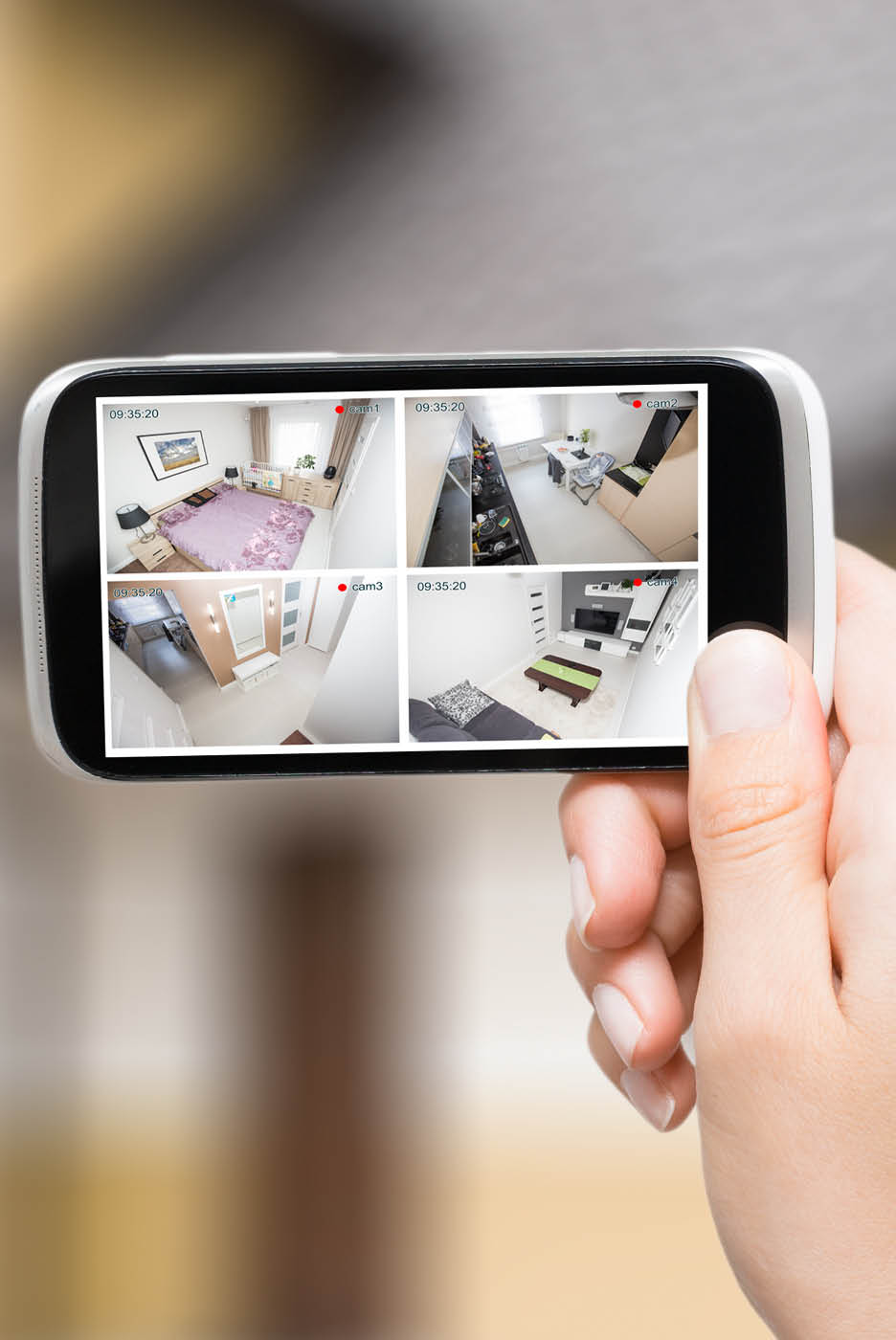At Abby’s home, in an affluent suburb of Sydney, her husband Nick had installed a variety of technological comforts. She liked the sense of security they gave her: there were cameras at the front of the house, and the doors and lights operated automatically. Alexa, the smart TVs, the music system – everything was internet enabled and connected.
But when the couple separated and Nick moved out, Abby found herself controlled by the very technology she’d grown to rely on. In a modern-day Kafka-esque nightmare, her smart home became a kind of prison.
“She’d make an arrangement to meet a friend for coffee and the garage doors would suddenly lock, meaning she couldn’t get the car out,” recalls Stephen Wilson, a security expert that Abby turned to for help. “Or all the doors would lock and she couldn’t leave the house. One day, she’d organised for the gardener to come to the house at 1pm. Half an hour before, everything was fine, then at 1pm the doors locked and he couldn’t get in.”
In the middle of the night, the heating system turned itself to its highest setting, or music would suddenly blast through the house. There were several audio-enabled cameras in various rooms. The children’s ipads, Abby’s phone and her Macbook were all connected to Nick’s Apple ID and icloud, which meant he controlled all of the devices and could access everything on them. He could change passwords in an instant. Experts call this technology-facilitated coercive control and to Abby, it felt all-encompassing.
All the doors would lock and she couldn’t leave the house
As the chief executive officer of Protective Group, which conducts technological assessments and searches for hidden surveillance devices, Wilson and general manager Robyn Roberts deal with cases of technological abuse and control every day. “This is a huge issue,” says Roberts, a former social worker. “This type of abuse is pervasive, menacing and emotionally draining. And there’s not a lot around to help women with it.”
As our reliance on technology has increased and smartphones have become ubiquitous, it has become easier than ever for the perpetrators of domestic abuse to track, stalk and harass their victims. In one survey, almost all (98 per cent) of the professionals working with survivors of abuse said their clients had experienced this type of coercive control.
“We often talk to women who’ve believe they’re being tracked,” says Rebecca Wilschefski, client services manager at the Women And Girls’ Emergency Centre (WAGEC) in Sydney. Many of their clients receive new smart phones through the Safe Connections program, a partnership between national family violence service WESNET and Telstra that provides vulnerable women with a free 4G mobile and $30 pre-paid credit. In an indication of the scale of the issue, demand for the service has rocketed. “In 2014 the program distributed 50 devices per month,” says Telstra Chief Sustainability Officer Tim O’Leary. “This year, the program is distributing 600 devices per month.” In the last five years, Safe Connections has donated nearly 19,000 phones.
New phones can help, but in many cases they’re not the solution. A determined abuser now has access to an array of tools with which to track or gaslight their partner.
In July this year, researchers from Queensland University of Technology released a report documenting an alarming variety of harassment methods, including men hacking their ex-partner’s social media accounts or bombarding a victim with messages – even implanting GPS tracking devices in their cars. One of Wilson’s clients discovered that her ex-partner had been flying a drone over the skylight at her home, and had used it to take photographs of her bed. Another had discovered a tracking device in her child’s teddy bear.
In the last five years, Safe Connections has donated nearly 19,000 phones
This behaviour has become so prevalent that police departments have begun reaching out to Wilson for training in this area; one told him they were receiving “prolific” reports of technological abuse.
But this is a rarity; too often women say police seem to underplay the effect of constant abusive texts or concerns they’re being stalked, and they receive little advice about how to ‘de-bug’ their phones or cars.
Professional advice and surveillance assessments, such as those offered by Protective Group, can be expensive for many women in abusive situations – costing anywhere from $250 to $1000 – and while some organisations, such as the Salvation Army, will foot the bill, they can’t afford to pay for every women who needs one. “The new Victorian government flexible support package can be used to release funds to help women to pay for a technical sweep,” says Wilson. But women in other Australian states may not be able to access this type of fund. “We’ve done 140 pro bono assessments in the last 18 months,” he adds.
In his office in Melbourne’s Southbank, Wilson – a stocky ex-cop with a friendly manner – lays out an array of devices he and his co-founder Steve Schultze have discovered. There’s a tracking device and data reader no bigger than the palm of a hand that fits under the steering wheel of a car, which can transmit a car’s location and – alarmingly – re-program some of the operating systems to affect the way it drives. A key fob contains a camera and audio recorder, and there’s a selection of innocuous-looking plug-in microphones and cameras.
Each of the devices can be bought easily online, but they’d be difficult to spot if you didn’t know what you were looking for. Spyware is also simple to download to phones, says Wilson. “[As an experiment] we bought an $80 phone from Woolworths, downloaded a free spyware app off the internet and left it with a journalist for two weeks,” he says. “We could see everywhere he went, his emails, text messages, his Facebook messages. We could hear his conversations and access the camera on the phone.”
There’s a tracking device and data reader that fits under the steering wheel of a car, which can transmit a car’s location
For victims of domestic abuse, the knowledge that someone has hacked their phone is often deeply confronting. “Nowadays, our phones are so much [a part of] our entire identity, like everything is there,” said one woman interviewed for the QUT report. “So to have your phone taken out of your hand and then read back to front is … really violating… Then with the stalking, I mean it made me feel really scared, actually just to have this device on you that you don’t know how much, I don’t even know if it was something that can turn on audio or not.”
These days, our phones, containing everything from photos to banking apps, to private messages, emails and music, have become a compendium of our lives. It’s hard to give them up and can feel like another denial of liberty to someone who already feels under siege. “Think about all the apps you have on your phone and how much you rely on them,” says Molly Dragiewicz, Associate Professor in the School of Criminology and Criminal Justice at Griffith University, and first author of the report. “And then so many of these apps have location information embedded within them.”
How do abusers gain access to their partners’ phones? Often, they are the ones who set up their partner’s internet accounts and phone, says Dragiewicz. “Some of the women we interviewed felt uneasy with that when it was happening at the start of their relationship, but a lot of them took it as a sign of care – one of those things you do for someone in the course of a relationship.” For other couples, it’s normal to know each other’s passwords, and intimate knowledge of family names and relationships means security safeguards are easily bypassed.
“What’s your mother’s maiden name? What was the name of your dog? An intimate partner is going to know the answer to those questions,” says Dragiewicz. “I don’t have a simple answer for how to address this, but I do think the first step is to think about it. Some computer scientists have started doing that, but designers need to be thinking about anticipating threats to domestic violence victims from the start.”
Overseas, there are some promising initiatives to help address these issues. In the New York and Seattle, city authorities are working with university researchers to set up technology clinics, where women can come to learn about cyber security and how to use their smart phones safely. As a result of talking to survivors at the clinics, PhD students at Cornell Tech have developed a spyware scanning tool for phones and an assessment questionnaire and protocol. “Australia doesn’t have a clinic like this yet,” says Dragiewicz, although she hopes that one might be in the pipeline.
Agencies such as WESNET provide training on technological abuse for police, social workers and other family violence workers. However, there are still problems in the way institutions such as the Family Court deal with child custody and communication between parents, says Dragiewicz. “It’s becoming increasingly difficult to fully separate from your abuser, particularly if you have co-parenting obligations.” When court orders orders stipulate contact regarding children should be made via email, for example, a woman can feel vulnerable to continued psychological abuse.
Dragiewicz and Wilson believe more funding is required for training and practical programs to help keep women safe. Abby was one of the fortunate ones, able to afford the services of Protective Group. After her home was assessed and her ex-partner’s access to her devices had been disrupted, she felt much safer and “empowered”.
“Feeling that you’re being watched and stalked causes enormous psychological damage,” says Wilschefski. “Women can feel scared of taking their children to the playground, scared of going outside. They feel reassured when we can help them feel safe.”
If you need help or advice, call 1800RESPECT or visit https://www.1800respect.org.au/












No Comments